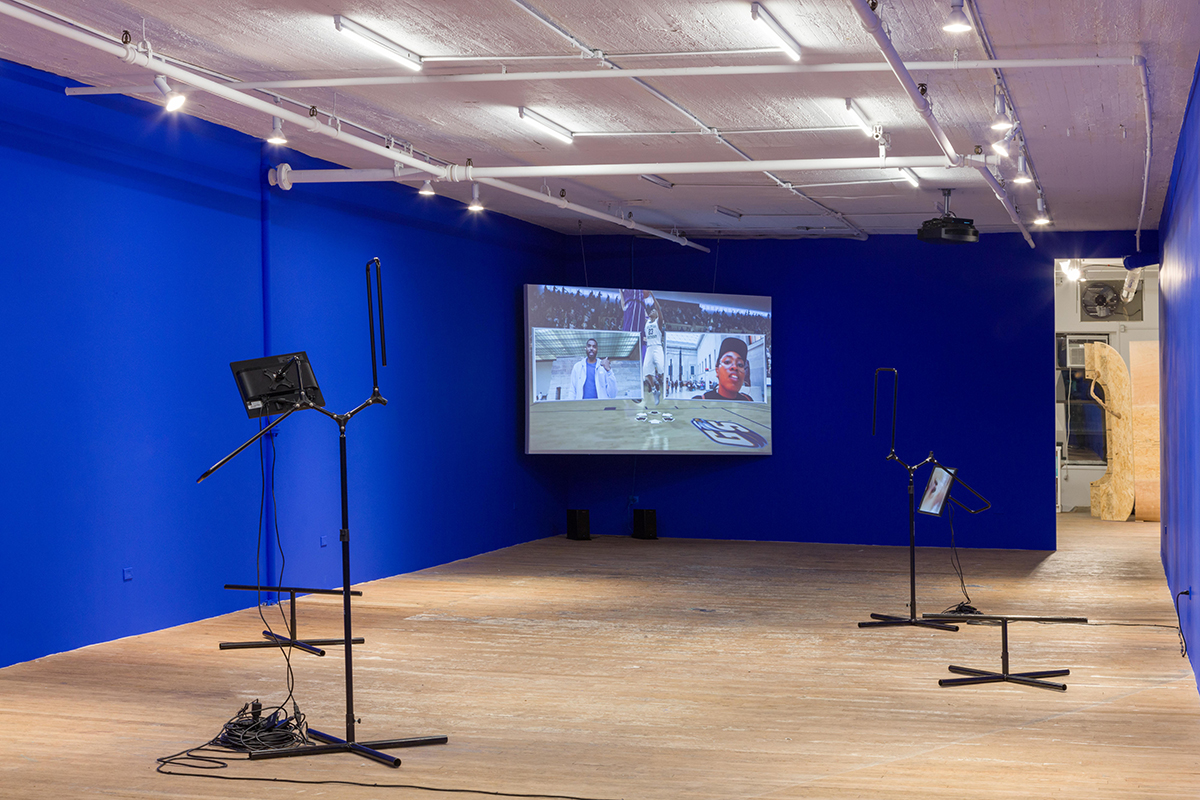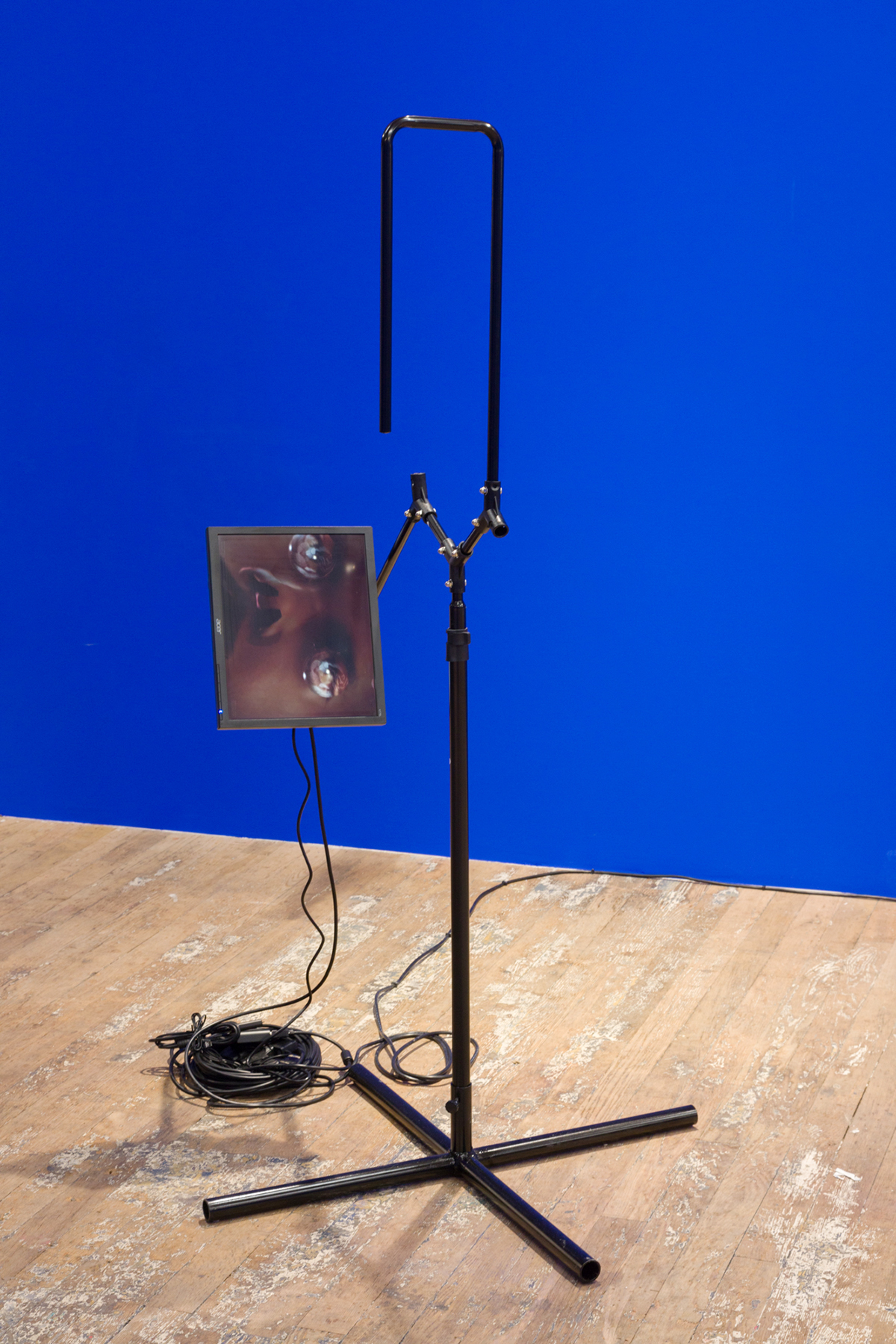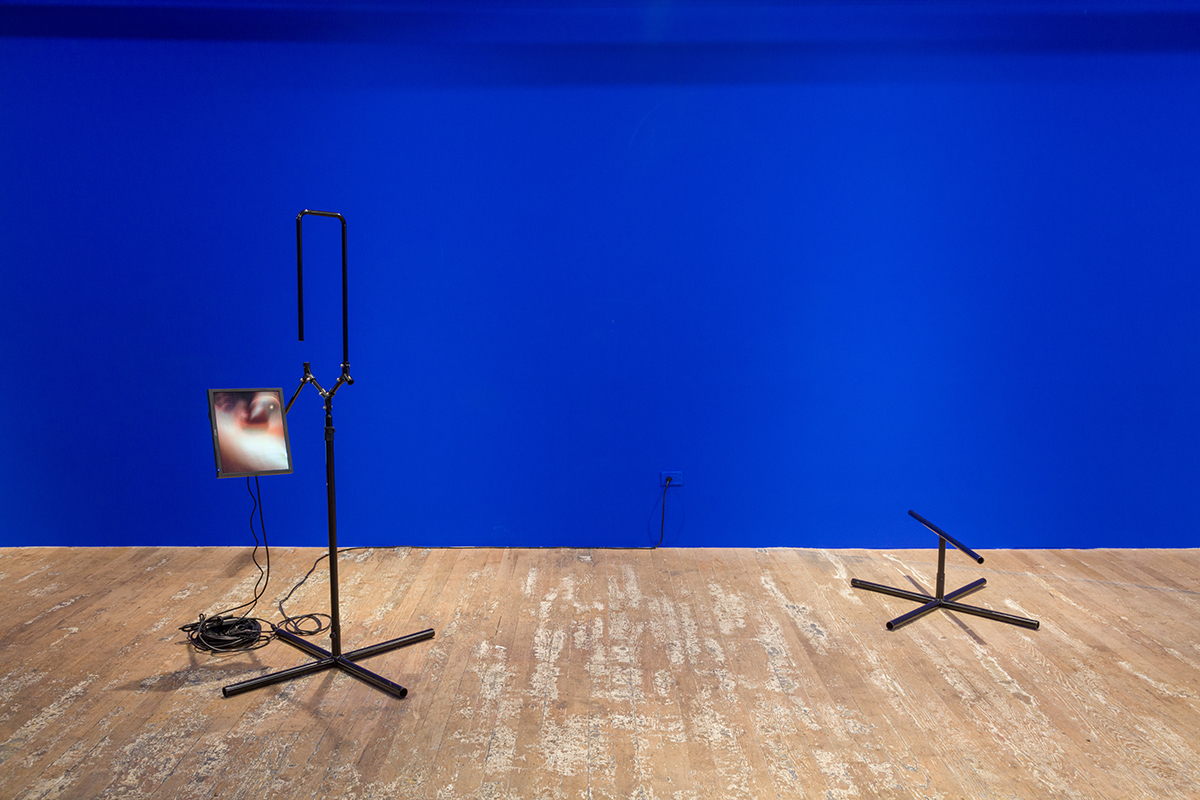Looks Just Like You: Sondra Perry at Bridget Donahue

You are everything, and everything is you. This line from a 1971 twangy soul track by the Stylistics—slowed and pitched to a bass crawl—pours over Sondra Perry’s exhibition at Bridget Donahue. It’s the soundtrack for the show’s centerpiece video, IT’S IN THE GAME ’17 or Mirror Gag for Vitrine and Projection (2017), and its elliptical chorus cleverly mirrors the paradox around which the show revolves. That is, net neutrality and open-source software have given us unprecedented access to technology, information, and modes of representation, and these make us more agentive than ever, just as they make us more beholden than ever to the interests of capitalism. We know now that the freedoms we find online mask other kinds of subjection and servitude, just like we know this awareness is easy to bury under a Netflix binge or same-day Amazon order. Perry plants a reminder about the state of things in a song that is such an earworm—it haunts beyond the exhibition. We could recast it: you have everything, and everything has you.
The song itself is aptly melancholic; it coos that no copy, no proxy, can live up to an original. There is melancholy, too, in the Rosco Chroma Key Blue that Perry painted the exhibition’s walls. The hue, which has been a dominant element of the artist’s output since 2016, is used in film as a temporary background for those added in post-production because it contrasts with human skin. While other artists have employed it (or Chroma Key Green) as a shorthand for the utopian possibilities built into the idea that our representation might, in editing, be transported anywhere at any moment, Perry takes on the technology more critically. For her, the Chroma Key operation reduces subjective experience to an equation of figure and ground; it relies on a binary that works against the conditions of understanding identity intersectionally, of taking into account the contextual factors that contribute to what even constitutes a figure. The notion of a groundless subject ignores the inequities of material reality; it makes promises it isn’t ready to keep.

Perry’s work often pushes up against the limits of representation in order to surface the ideologies inherent to new technologies, and tools in general. Here, three of the artist’s “workstations”—sculptures in which videos play on monitors affixed to athletic machines—are situated against the blue surround. The iterations of these works that appeared in her 2016 exhibition at The Kitchen placed viewers in the seats of rowing machines or bikes—to engage the work, the viewer had to also engage the pursuit of a body that fits a socially determined ideal. In these works, monitors with privacy screens are installed at irksome heights and angles on “Spalding universal shot trainers” for basketball players, such that the videos are only visible from specific positions. These subject viewers to prescribed bodily dimensions while challenging the “universal” aspect of the training devices.
It seems Perry makes these sculptural works explicitly corporeal to properly foil the ways in which such faulty claims about universalism play out immaterially. The racism and sexism of Silicon Valley go far beyond hiring patterns or AirBnb user profiling, into the very code that supports the virtual reality that has so much democratic promise. Insofar as software engineering is also social engineering, the predilections and prejudices of a largely white male industry recapitulate existing structural inequalities as they create new algorithmic ones. The New York Times reported this month that a recent study shows commercial facial recognition technologies misidentify the gender of “darker-skinned females” thirty-five percent of the time, while white men are identified ninety-nine percent of the time. This takes metaphors of social invisibility to a whole other level.
Perry places the digital era’s problems of visibility, exploitation, and appropriation in a historical continuum in the sixteen-and-a-half minute single-channel video IT’S IN THE GAME ’17 or Mirror Gag for Vitrine and Projection (2017). The work centers on her twin brother, whose likeness and physical statistics were licensed, without his consent and without compensation, by the NCAA to the video game developer EA Sports when he was a college basketball player at Georgia Southern University. Footage of her brother, pictured in a small inset video feed, describing the personalities and performances of each of his teammates while Perry scrolls through their avatars in the EA Sports game, is interweaved with iPhone video of the twins roaming around the Arts of Africa, Oceania, and the Americas departments at the Metropolitan Museum of Art and the British Museum. They take selfies and navigate online databases of objects that were themselves likely acquired dubiously.

The video opens with an out-of-focus image of the twins as children. They are overlaid with objects, rendered in 3D and in Chroma Key Blue, sourced from these encyclopedic museum collections. The digital representations spin, seemingly adrift in some ahistorical limbo and ripe for the taking. A cheesy voiceover of an American simulating AI tells us of the provenance of the originals: one of these objects is Hoa Hakananai’a, an Easter Island moai looted by the crew of the H.M.S. Topaze in 1868 and presented to Queen Victoria, who then gifted it to the British Museum. Perry emphasizes the whitewashing performed by the institutionalization of these objects; she challenges the notion that some virtue of the museum could eradicate the violence of their capture. It’s worth noting, too, that she includes the logos of Henie Onstad Kunstsenter, Oslo, and the ICA in Philadelphia in her video, making explicit the institutions that support her own assessment of cultural appropriation and colonization. In a similar gesture, the artist’s twin brother is pictured later in the video playing the game in which his ill-obtained avatar is featured.
In the video’s final scene, we see what looks like a screengrab from a Wikipedia image entry whose caption reads, “Triumphal procession into Paris of art looted by Napoleon from Italy in 1797. The Horses of Saint Mark in the centre, themselves taken from Constantinople in 1204, were returned to Italy in 1815.” It throws into relief the more benign-seeming prospect of digital colonization. Sculptures can be returned to a rightful owner, but what would reparations for image use look like? How might one return a likeness?

Annie Godfrey Larmon is a writer and editor based in New York.